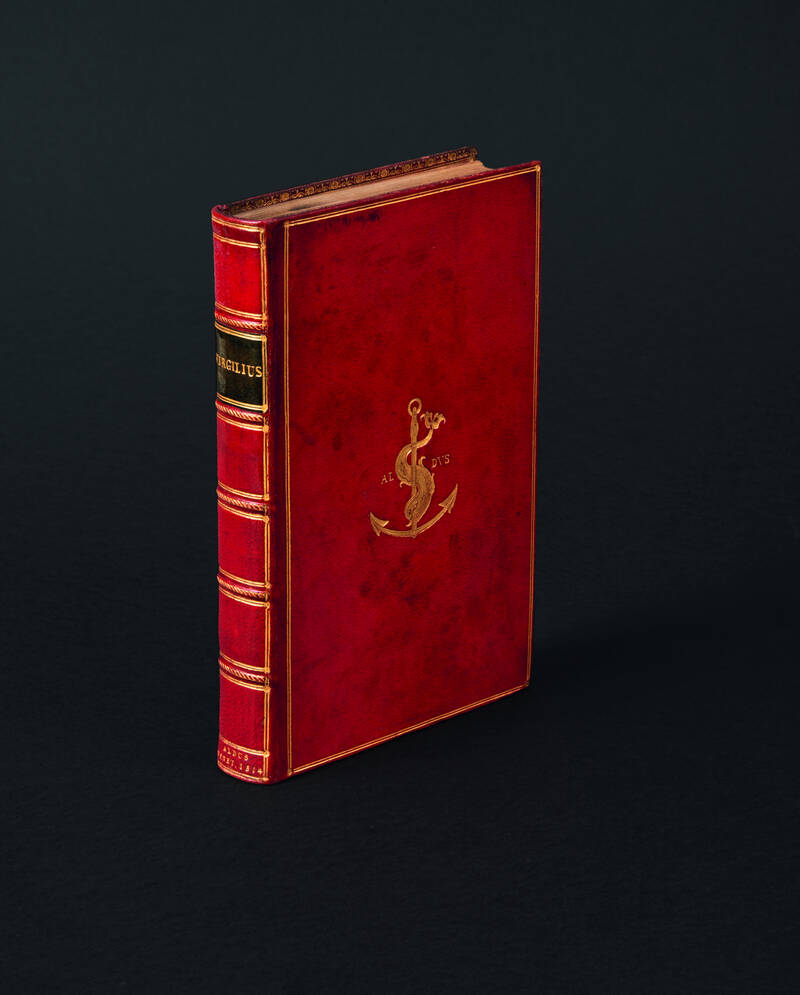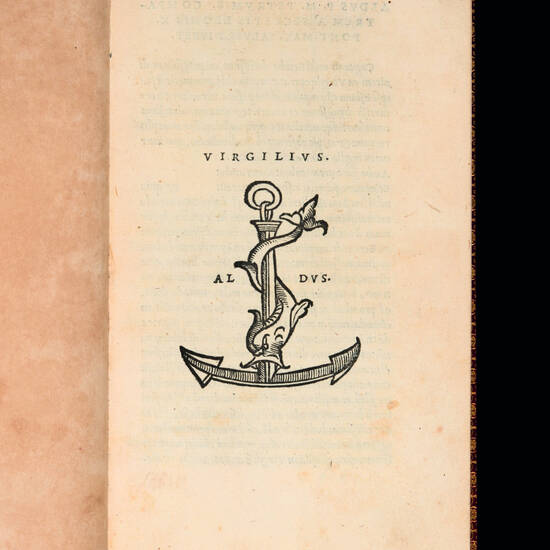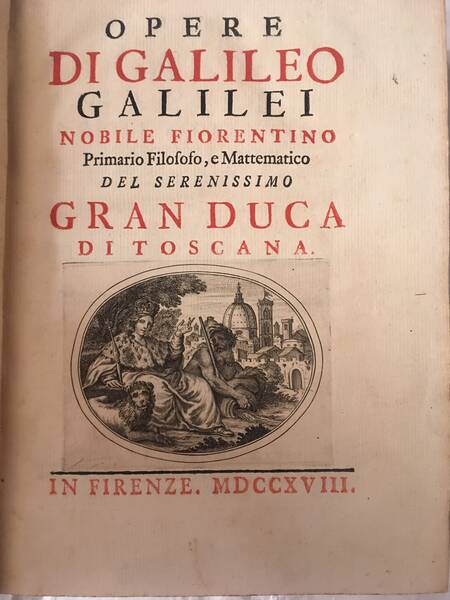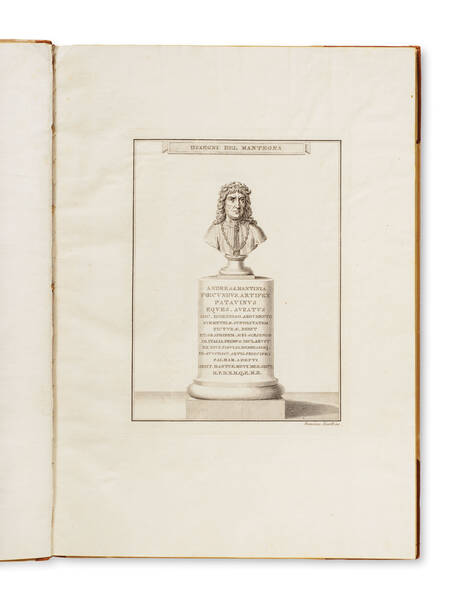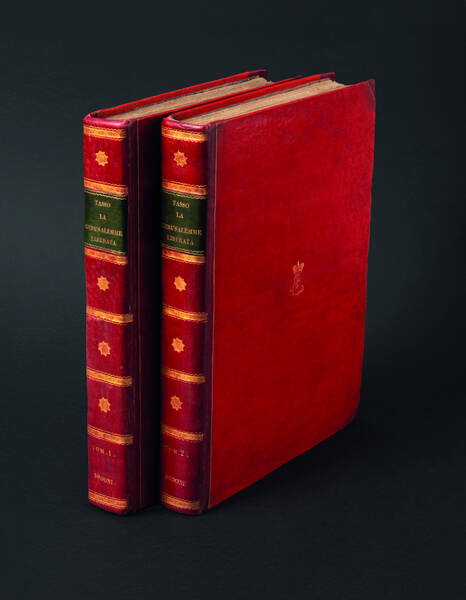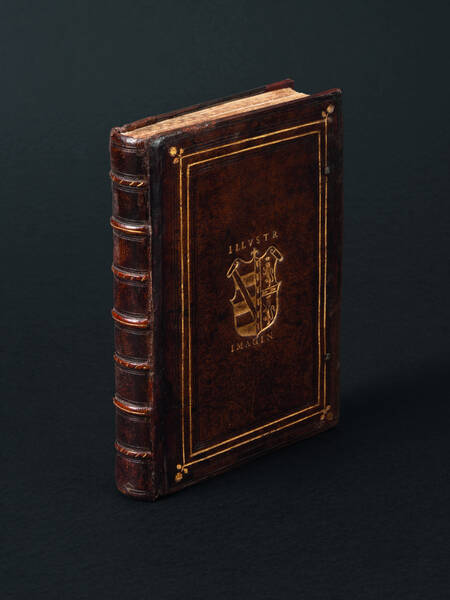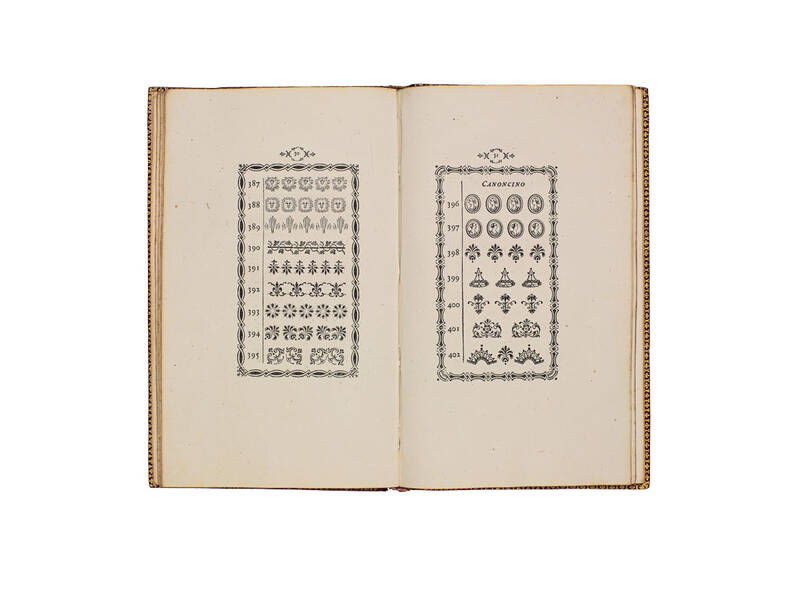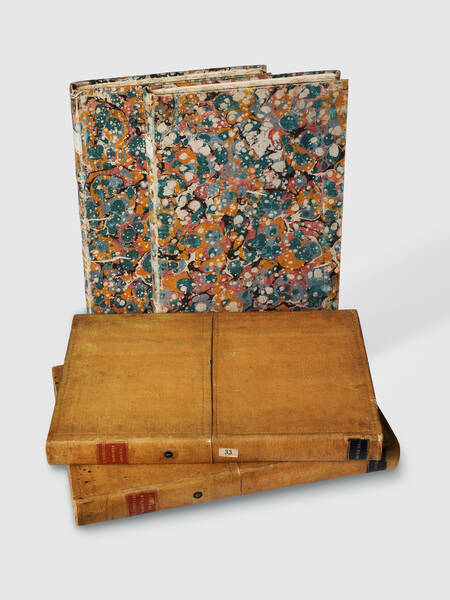VERGILIUS MARO, Publius. Virgilius.
Venice, in aedibus Aldi et Andreae soceri., 1514 mense Octobri. [1518 circa].Octavo (160 x 98 mm.), 210, [4] leaves with Aldus' device on title page and on verso of last page. Small portion of the white corner of the last six pages restored but a very fine copy bound in late eighteenth-century red morocco, covers double ruled in gilt, with gilt Aldus' device at the center, spine with raised bands in six compartments, green morocco lettering piece, gilt edges.
The extremely rare, corrected third edition of Virgilius, published by Aldus Manutius (1450-1515) and his father-in-law Andrea Torresano (1451-1528). Initially presented and dated as a 1514 publication, Renouard has proposed two separate issues: the initial third edition with a long errata list, rushed for printing in October likely due to the decline of Aldus' health, with his death following only a few months later in February; the second issue, the one presented here, is the later version corrected by Andrea Navagero (1483–1529) and without the four-page errata preceding the text, replaced by blanks; Renouard dates this imprint as later than 1519 due to the inclusion of the printer's mark as an open-mouthed dolphin wound around the Aldine anchor, a mark not used earlier. This is the rarest of the two imprints.
First published in 1501, this collection of Virgil's complete works – encompassing the Eclogues, Georgica, and Aeneid - marked a significant editorial milestone towards making classical literature accessible in smaller, more portable sizes that were previously confined to devotional works. It was the first classical book printed in octavo format, as well as the first to be primarily printed in Italic type, which was developed by Aldus based on the Italian cursive humanist script and cut by Francesco Griffo (1450-1518). “The compact style of the Italic face enabled the printer to compress his subject matter into a smaller number of pages and thus reduce the physical size of the work. During the sixteenth century, it quickly became the fashionable vernacular type for Italian and French books, achieving such popularity that Aldus was soon forced to seek exclusive rights from the Venetian senate. These legal protections, however, were of little use; Aldus' Italic type was freely counterfeited by the Giunti at Florence, the Soncini in Fano, and the Lyon printers. Not until the seventeenth and eighteenth centuries did the popularity of the type begin to wane.'' (Angerhofer, pp.11-12)
This third edition is the first to include Aldus' preface dedicated to the learned Venetian patrician Pietro Bembo (1470-1547), which had been omitted in the two earlier publications. “Here, Aldus explains that he first developed the idea of the smaller format after using the small-size manuscript copies of the classics in the library of Pietro's father, Bernardo. Seeing the utility of the smaller manuscripts, Aldus no doubt contemplated how smaller printed books might likewise be carried in a pocket, be less expensive, and thus more available for everyday use. As he later explained, these smaller books were intended not so much as a pocket-sized book as simply a book that would be "handy." Quite literally, he wrote, the octavos were in forma enchiridii ("in the shape of an enchiridion," a manual or handbook). The impact of the innovation of a smaller-sized book proved immediate and revolutionary.'' (Angerhofer, pp.11-12) Manutius' association with Pietro and Bernardo Bembo proved to be an incredibly rich partnership for the development of both book design and the spread of classical literature. “The three men shared the same passion for classical culture and texts, enthusiasm for learning and love of books. Pietro collaborated with Aldus in the editing of some of the texts for publication, while Bernardo willingly lent to him manuscripts from his own library. From these ancient codices and humanistic manuscripts Aldus drew inspiration for the design, fonts and format of his editions. By virtue of his skills as a printer and publisher and his artistic talent as a book designer, Aldus created books that eliminated the distance from the past and built a bridge to the future as they contributed to change the appearance of Western books for ever.'' (Cambridge Library)
WorldCat records only 3 copies in the US (Harry Ransom Humanities Research Center; Princeton, Sterling and Francine Clark Art Institute)
USTC 862703; EDIT 16 CNCE 55882; Renouard, p. 68.8; Adams V 465; Ahmanson-Murphy 127; BM STC Italian p. 730; Brunet V 1281; Schweiger II, 1156; Isaac 12844; Paul Angerhofer et al. In aedibus Aldi: the legacy of Aldus Manutius and his press. 1995; Manutius and the Bembos, Cambridge University Library: https://exhibitions.lib.cam.ac.uk/manutius/case/manu-tius-and-bembo [accessed 09/09/2024].
Other Books
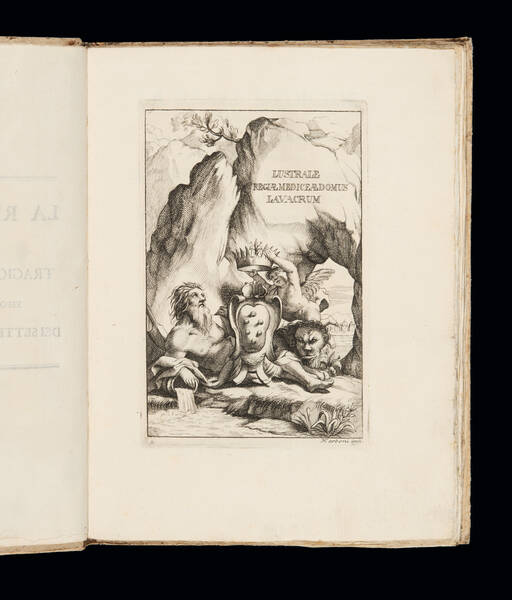
CATANI, Francesco Saverino
La reale medicide, esponente nella morte di Don Garzia i fatti più speciali di Cosimo Duca II. di Firenze ... Tragica festa teatrale, illustrata di...
€ 3.000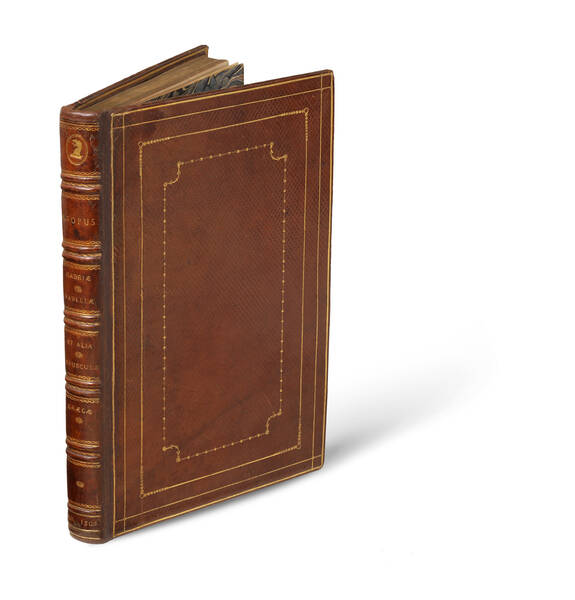
AESOP
Vita & fabellae Aesopi cum interpretatione Latina ... Gabriae Fabellae tres & quadraginta ... Phurnutus seu, ut alii, Curnutus De natura deorum....
€ 36.000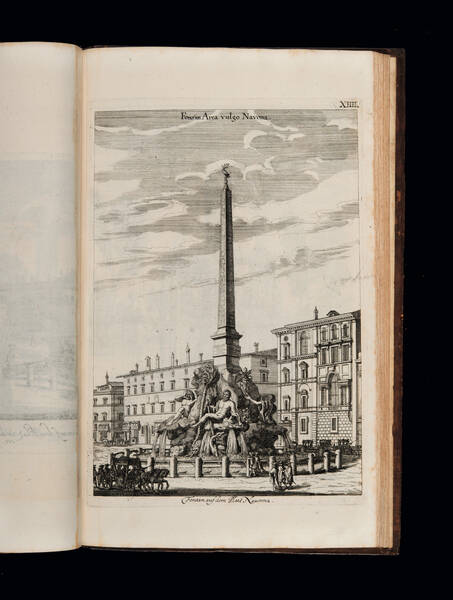
FALDA, Giovanni Battista
Romanorum fontinalia, sive nitidissimorum perenniumque, intra et extra, Urbem Romam, fontium vera, varia, et accurata delineatio.
SOLD OUT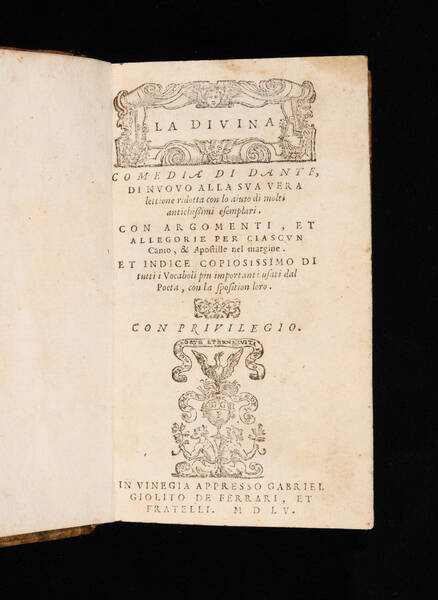
ALIGHIERI, Dante
La Diuina Comedia di Dante, di nuouo alla sua vera lettione ridotta con lo aiuto di molti antichissimi esemplari. Con argomenti, et allegorie per...
SOLD OUT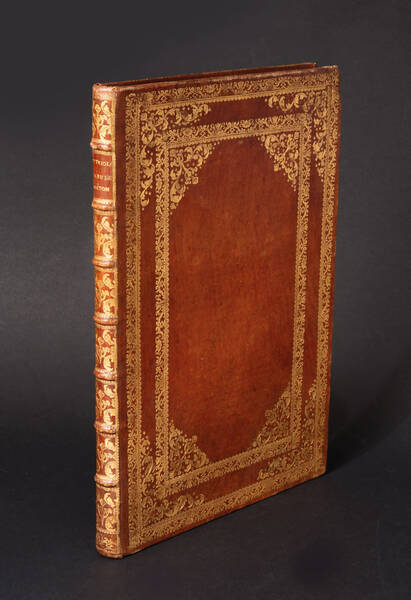
BERRETTINI DA CORTONA PIETRO
Tabulae Anatomicae a celeberrimo pictore Petro Berrettino Cortonensi delineatae, & amp; egregiè aeri incisae nunc primum produent, et a Cajetano...
SOLD OUT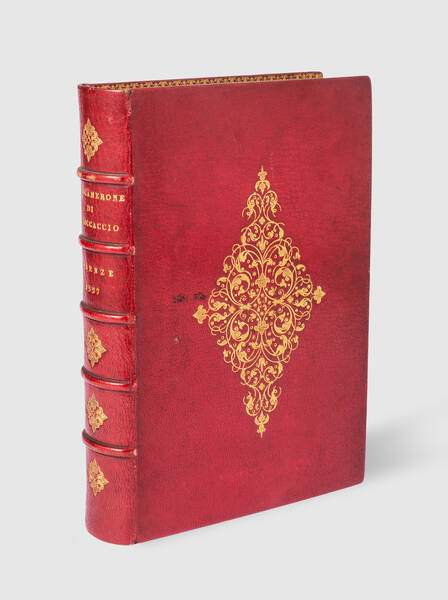
BOCCACCIO, Giovanni
Il Decamerone di m. Giouanni Boccaccio nuouamente corretto et con diligentia stampato.
SOLD OUT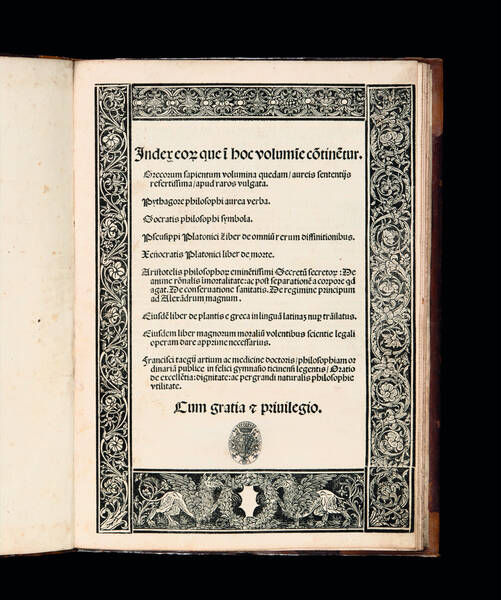
TAEGIO, Francesco
Grecorum sapientum volumina quedam aureis sententijs refertissima apud raros vulgata. Pythagore Aurea verba. Socratis Symbola. Pseusippi Platonici...
€ 12.000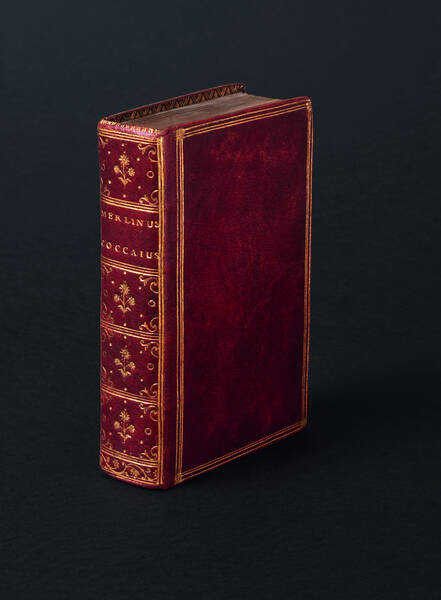
FOLENGO, Teofilo
Opus Merlini Cocaii poetae Mantuani Macaronicorum, totum in pristinam formam per me magistrum Acquarium Lodolam optime redactum in his infra notatis...
€ 11.000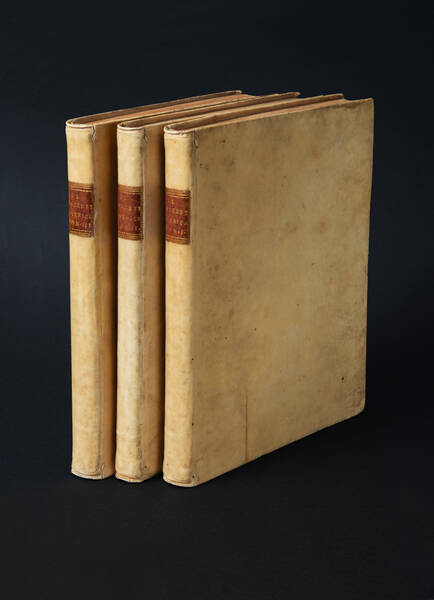
GAZZETTIERE AMERICANO
Il Gazzettiere Americano, contenente un distinto Ragguaglio di Tutte le Parti del Nuovo Mondo.
SOLD OUT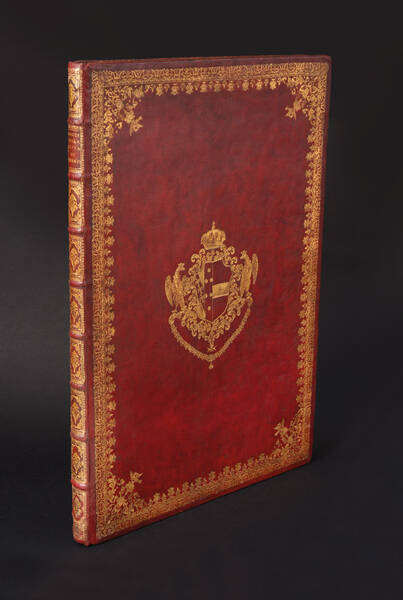
ZOCCHI, Giuseppe
Scelta di XXIV vedute delle principali contrade, piazze, chiese, e palazzi della citta di Firenze.
€ 45.000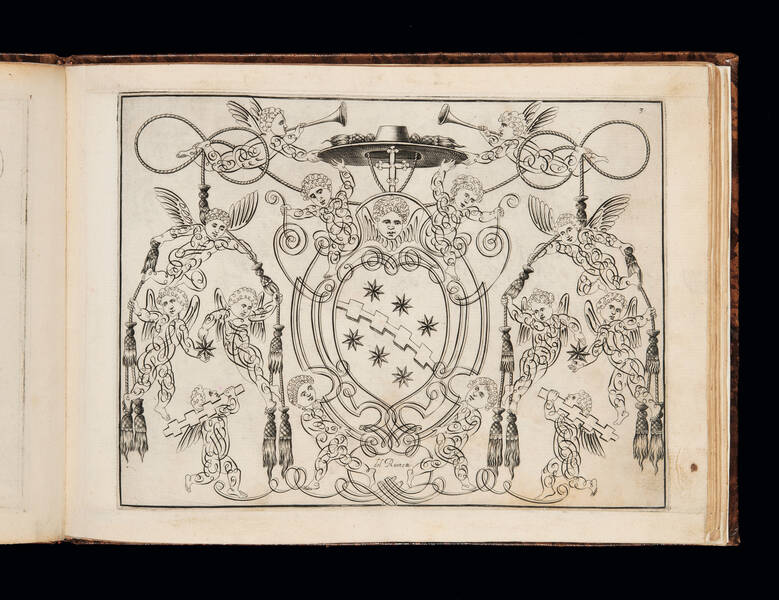
RUINETTI, Tomaso
Idea del buon scrittore, opera prima di Tomaso Ruinetti da Ravena a’beneficio de’desiderosi d’imitare le vere forme dello scrivere.
€ 8.000MEDA RIQUIER rare books ltd.
4 Bury Street St James's
SW1Y 6AB London
Phone +44 (0) 7770457377
info@medariquier.com
